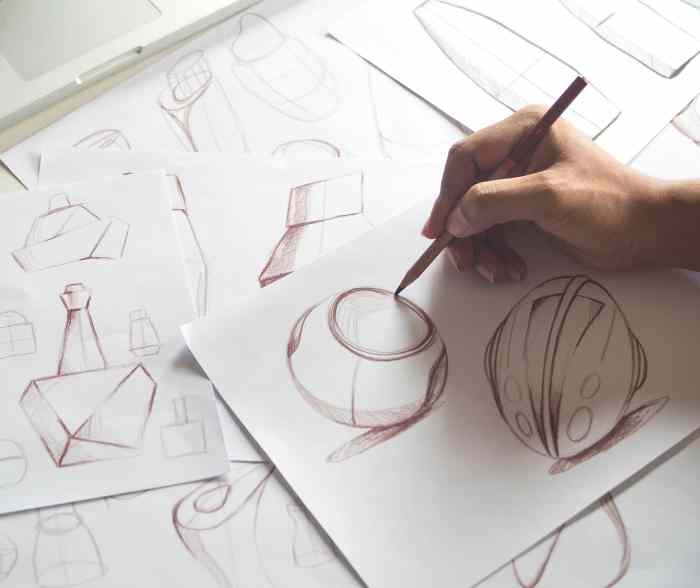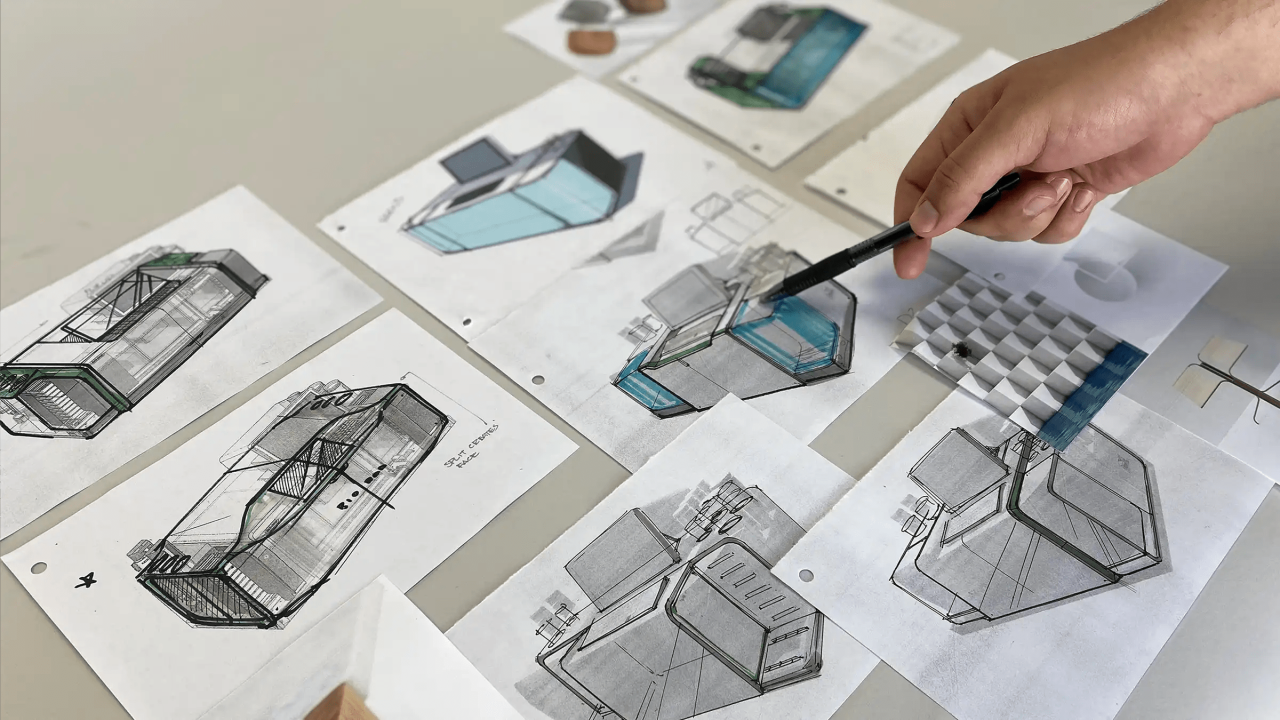Exploring the World of Industrial Design
Delving into the realm of industrial design, this introductory paragraph aims to provide a captivating glimpse into the importance and impact of this field on product development and user experience.
As we unravel the key principles, technological advancements, and sustainable practices in industrial design, we uncover the intricate balance between aesthetics and functionality that drives innovation.
Definition of Industrial Design

Industrial design is the process of designing products that are not only visually appealing but also functional and user-friendly. It focuses on the aesthetics, ergonomics, and usability of a product, aiming to improve the overall user experience. Industrial designers play a crucial role in product development by bridging the gap between form and function, creating products that are both innovative and aesthetically pleasing.
Significance of Industrial Design in Product Development
Industrial design significantly impacts the success of a product in the market. By incorporating user-centered design principles, industrial designers can enhance the usability and functionality of a product, making it more intuitive and engaging for users. For example, the sleek and ergonomic design of smartphones not only makes them visually appealing but also enhances the user experience by providing a comfortable grip and easy navigation.
Role of Industrial Designers in Creating Innovative Products
Industrial designers are responsible for translating ideas and concepts into tangible products that meet the needs and desires of consumers. They use their creativity and technical skills to design products that are not only visually striking but also functional and practical.
For instance, the design of electric cars not only focuses on aesthetics but also on maximizing energy efficiency and sustainability, showcasing the importance of industrial design in creating innovative solutions.
Principles of Industrial Design
Industrial design is guided by several key principles that help shape the design process and the final product outcomes. These principles include form follows function, minimalism, and user-centered design. Let's explore how these principles influence industrial design.
Form Follows Function
Form follows function is a fundamental principle in industrial design that emphasizes the importance of designing products based on their intended purpose. This principle suggests that the form or appearance of a product should be determined by its function or utility.
For example, a chair should be designed for comfort and support before considering its aesthetic appeal. By prioritizing function over form, designers can create products that are efficient, practical, and user-friendly.
Minimalism
Minimalism is another key principle in industrial design that focuses on simplicity, clarity, and eliminating unnecessary elements. This principle encourages designers to strip away any extraneous features or embellishments that do not contribute to the overall function or user experience of a product.
Minimalist design often results in clean, sleek, and timeless products that are visually appealing and easy to use.
User-Centered Design
User-centered design is a principle that places the needs, preferences, and behaviors of the end user at the forefront of the design process. By understanding the target audience and involving users in the design process through research and testing, designers can create products that meet the specific needs and expectations of their users.
This approach leads to products that are intuitive, accessible, and enjoyable to use.
Balancing Aesthetics with Functionality

In industrial design, it is crucial to strike a balance between aesthetics and functionality. While aesthetics contribute to the visual appeal and emotional connection of a product, functionality ensures that the product performs its intended purpose effectively. By integrating both aspects seamlessly, designers can create products that not only look good but also work well.
Finding this balance is essential to creating successful and impactful designs that resonate with users and stand the test of time.
The Impact of Technology on Industrial Design
The field of industrial design has undergone significant transformation due to advancements in technology. These technological innovations have revolutionized the way products are conceptualized, designed, and brought to market.
CAD Software in Industrial Design
Computer-Aided Design (CAD) software plays a crucial role in modern industrial design. Designers can create detailed 2D and 3D models of products, allowing for precise measurements, simulations, and rapid prototyping. CAD software enables designers to iterate quickly on designs, test various concepts, and make modifications efficiently.
3D Printing in Industrial Design
D printing, also known as additive manufacturing, has revolutionized the prototyping process in industrial design. Designers can now create physical prototypes of products directly from digital models, speeding up the design iteration process and reducing time to market. 3D printing allows for complex geometries, customization, and cost-effective small-scale production.
Virtual Reality and Augmented Reality in Industrial Design
Virtual reality (VR) and augmented reality (AR) technologies are changing the way industrial designers prototype and visualize products. Designers can immerse themselves in virtual environments to experience and interact with their designs in a realistic way. AR enables designers to overlay digital information onto the physical world, enhancing design visualization and collaboration.
Sustainable Design Practices in Industrial Design
When it comes to industrial design, sustainability plays a crucial role in reducing the impact on the environment. By incorporating sustainable design practices, industrial designers can create products that are not only eco-friendly but also contribute to a more sustainable future.
Using Recycled Materials
One of the key sustainable design practices in industrial design is using recycled materials. By incorporating recycled materials into the manufacturing process, designers can reduce the demand for new resources and minimize waste. This approach not only helps in conserving natural resources but also reduces the carbon footprint of the product.
Designing for Disassembly
Designing products for disassembly is another important sustainable design practice. By creating products that are easy to disassemble and repair, designers can extend the lifespan of the product and reduce the amount of waste generated. This approach promotes a circular economy where products are reused, recycled, or repurposed instead of being discarded.
Creating Eco-Friendly Products
Industrial designers can contribute to creating eco-friendly products by focusing on longevity and recyclability. By designing products that are durable and long-lasting, designers can reduce the need for frequent replacements, thereby reducing waste. Additionally, designing products with recyclability in mind ensures that materials can be easily separated and recycled at the end of the product's life cycle, further minimizing environmental impact.
Final Summary
In conclusion, industrial design emerges as a dynamic field where creativity meets functionality, pushing boundaries and shaping the future of product design. Through a blend of artistry and engineering, industrial designers play a vital role in crafting products that resonate with users and stand the test of time.
FAQ Resource
What is industrial design?
Industrial design involves creating products that are not only visually appealing but also functional and user-friendly. It focuses on optimizing the form and usability of objects.
How do key principles like form follows function influence industrial design?
Key principles like form follows function guide industrial designers in ensuring that the design of a product is dictated by its purpose and function rather than aesthetics alone.
What technologies are impacting industrial design?
Advancements in technologies such as CAD software, 3D printing, virtual reality, and augmented reality have revolutionized the way industrial designers prototype and design products.
Why is sustainability important in industrial design?
Sustainability in industrial design is crucial for reducing environmental impact. Designing products with recycled materials and a focus on longevity helps in creating eco-friendly solutions.




